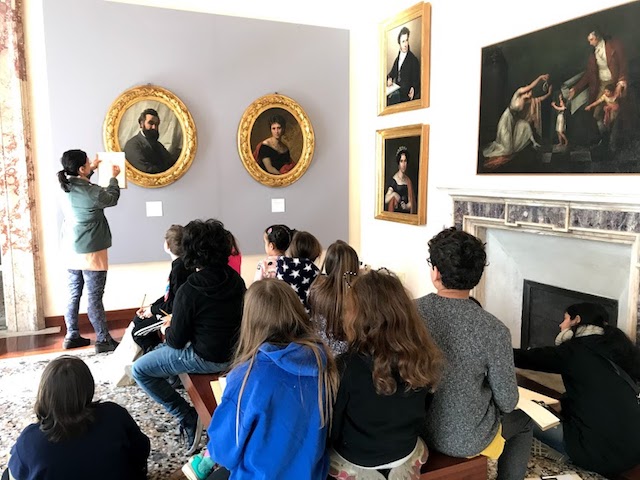What We Believe In
CRITICAL THINKING
Art is not only about art: children and adults can develop critical thinking, language skills, interpersonal communication and have fun at the same time, just by learning to LOOK and TALK about what they SEE in a museum. By addressing themes and questions that arise in relation to modern and contemporary art, children can build up on their knowledge and life experience.
ENGLISH LANGUAGE
Language matters! In our globalised world, English is fast becoming a tool for communicating but also a way of living. Our activities combine the power of images with discussions in English, so that children and young adults have the opportunity to absorb the language effectively, unselfconsciously and playfully. We are also committed to the learning process by offering a select number of bi-lingual English and Italian programmes.ART
It is never too early or too late to learn how to look at art and artists- but it helps if we understand at an early stage that there are more ways to describe the world than just words and numbers.This is why we offer programmes for young children (pre-school), as well as students of all ages looking at art through a thematic lens.
LIFE SKILLS
Skills matter! The latest thinking about education and future success encourages a shift away from traditional knowledge towards developing critical skills for life. How much we know matters less than how we learn and we gently guide students towards learning how to think outside of the box.
Our Programmes
Museum programmes consist of a 1.5hr visit to any one of Rome’s modern and contemporary art museums. The activity is built around a theme and examines 4 to 5 artworks at a time. During the visit the audience is engaged on two levels: participating in hands-on activities, using different art tools and skills, and being part of a lively discussion facilitated by inquiry open-ended questions.
Our school programmes are generally conceived in 3 or 5 sessions. All of them can be adapted, in length and theme, to support specific curriculum areas. During each session the students observe and analyse several pieces of art, reflecting on the artistic process, examining “big questions”. They are then engaged in art activities, investigating the properties and possibilities of materials through interdisciplinary learning. We believe that a thematic approach supports student-centered, interdisciplinary teaching.
Sorry, no records were found. Please adjust your search criteria and try again.
Sorry, unable to load the Maps API.






















